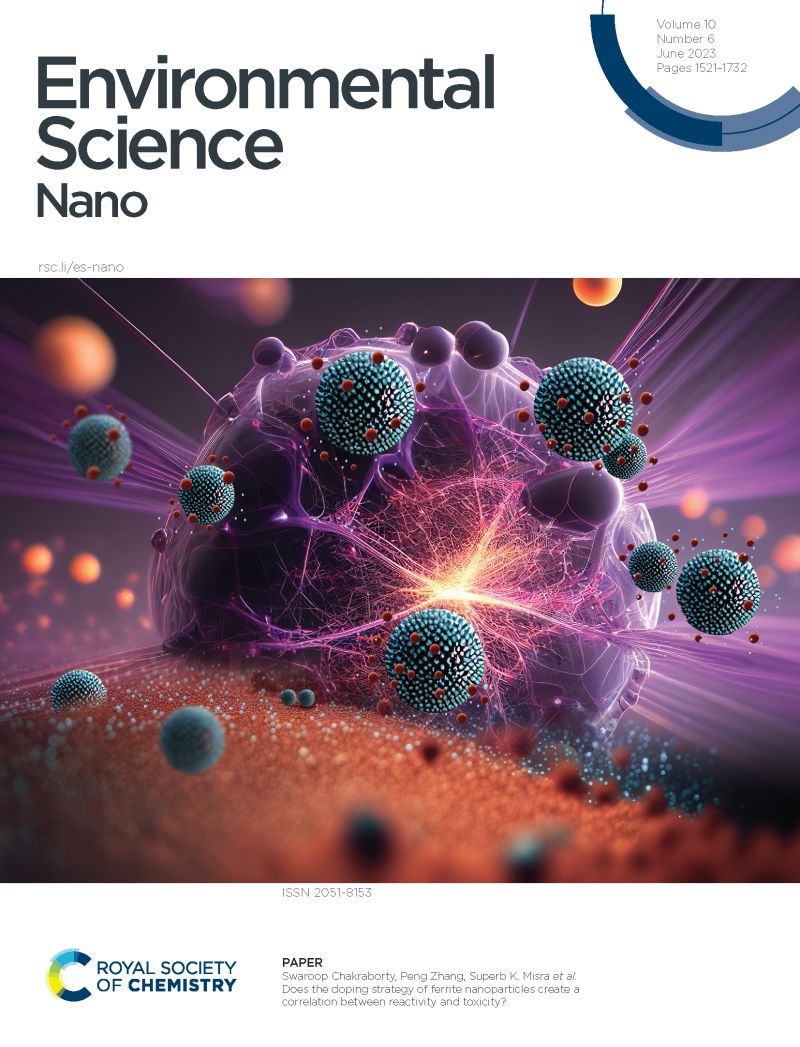Nanostructured copper electrodes - a new step in the development of microbial bioelectrochemical systems
IF 5.8
2区 环境科学与生态学
Q1 CHEMISTRY, MULTIDISCIPLINARY
引用次数: 0
Abstract
This work proposes a new method for forming a biosensor based on a nanopillar copper electrode and microorganisms for rapid assessment of the biochemical oxygen demand (BOD) index. Heterogeneous electron transfer constants were obtained for water-soluble and insoluble redox-compounds, and single-mediator and dual-mediator bioelectrochemical systems were formed taking into account the obtained values. It was shown that the yeast Debaryomyces hansenii is not susceptible to the toxic effect of copper and could be effectively used with a nanostructured electrode in the ferrocene-methylene blue dual-mediator system. Paracoccus yeei bacteria are susceptible to the toxic effect of copper ions, therefore, their immobilization on the nanostructured electrode was carried out using the redox-active polymer poly(neutral red), which protects microorganisms from negative effects and allows effective conjugation of microorganisms with the surface. The developed bioelectrochemical measuring systems have high sensitivity (the lower limit of determined BOD5 values is 2.0 mg/dm3) and high correlation with the standard method for BOD measurement in surface water samples (R2 > 0.98). Thus, the work demonstrated for the first time the successful use of a metal nanopillar electrode as a substrate for the biosensor, and the created biosensor systems could serve as prototypes of commercially available miniature sensors for rapid assessment of water quality. The cost of the biosensor of the developed bioelectrochemical measuring systems was estimated: for a two-mediator system based on D. hansenii microorganisms and ferrocene-methylene blue mediators, the cost of one bioelectrode was 4.28 USD, and for a system based on P. yeei microorganisms and poly(neutral red) – 3.91 USD.纳米结构铜电极--开发微生物生物电化学系统的新步骤
本研究提出了一种基于纳米柱铜电极和微生物的生物传感器新方法,用于快速评估生化需氧量(BOD)指数。研究人员获得了水溶性和不溶性氧化还原化合物的异相电子转移常数,并根据所获得的数值建立了单介质和双介质生物电化学系统。结果表明,汉森酵母菌(Debaryomyces hansenii)不易受铜的毒性影响,可在二茂铁-亚甲基蓝双介质系统中有效地与纳米结构电极配合使用。Paracoccus yeei 细菌易受铜离子的毒性影响,因此使用氧化还原活性聚合物聚(中性红)将其固定在纳米结构电极上,这样既能保护微生物免受负面影响,又能使微生物与表面有效结合。所开发的生物电化学测量系统具有很高的灵敏度(测定的 BOD5 值下限为 2.0 mg/dm3),与地表水样本中 BOD 测量的标准方法具有很高的相关性(R2 > 0.98)。因此,这项研究首次成功地将金属纳米柱电极用作生物传感器的基底,所创建的生物传感器系统可作为商用微型传感器的原型,用于快速评估水质。据估算,所开发的生物电化学测量系统的生物传感器成本为:基于 D. hansenii 微生物和二茂铁-亚甲基蓝介质的双介质系统,一个生物电极的成本为 4.28 美元;基于 P. yeei 微生物和聚(中性红)的系统,一个生物电极的成本为 3.91 美元。
本文章由计算机程序翻译,如有差异,请以英文原文为准。
求助全文
约1分钟内获得全文
求助全文
来源期刊

Environmental Science: Nano
CHEMISTRY, MULTIDISCIPLINARY-ENVIRONMENTAL SCIENCES
CiteScore
12.20
自引率
5.50%
发文量
290
审稿时长
2.1 months
期刊介绍:
Environmental Science: Nano serves as a comprehensive and high-impact peer-reviewed source of information on the design and demonstration of engineered nanomaterials for environment-based applications. It also covers the interactions between engineered, natural, and incidental nanomaterials with biological and environmental systems. This scope includes, but is not limited to, the following topic areas:
Novel nanomaterial-based applications for water, air, soil, food, and energy sustainability
Nanomaterial interactions with biological systems and nanotoxicology
Environmental fate, reactivity, and transformations of nanoscale materials
Nanoscale processes in the environment
Sustainable nanotechnology including rational nanomaterial design, life cycle assessment, risk/benefit analysis
 求助内容:
求助内容: 应助结果提醒方式:
应助结果提醒方式:


